SOL ETF opens the floodgates—can Jito leverage this to ignite a Solana ecosystem rebound?
Although the Solana ETF has been launched, network revenue trends are declining. Jito is at the intersection of new capital inflows and microstructure improvements.
Although the Solana ETF has been launched, network revenue trends are declining, and Jito is at the intersection of new capital inflows and microstructure improvements.
Written by: Sam Schubert, Carlos
Translated by: AididiaoJP, Foresight News
Bitwise SOL Staking ETF (BSOL) has begun trading, joining SSK as the only two Solana spot ETFs in the United States. Notably, Bitwise stated that its goal is to maximize staking rewards by achieving a 100% staking ratio, resulting in a 7.34% staking reward rate. Whether it is truly possible to stake 100% of SOL holdings will be interesting to watch. SSK and Europe’s SOL ETP have been operating for more than four years, and they intentionally keep their staking ratios well below 100%. The reason is purely operational: these issuers need to ensure sufficient liquidity to meet daily redemption demands.
Compared to these participants, Bitwise will conduct internal staking through Helius, which may improve BSOL’s operational efficiency. For three months, Bitwise will waive management fees for the first 1 billion dollars of assets under management. BSOL will open the floodgates for more SOL ETFs, and the amount of capital these ETFs can actually attract is likely to far exceed the 415 million dollars in cumulative inflows that SKK has seen since July.
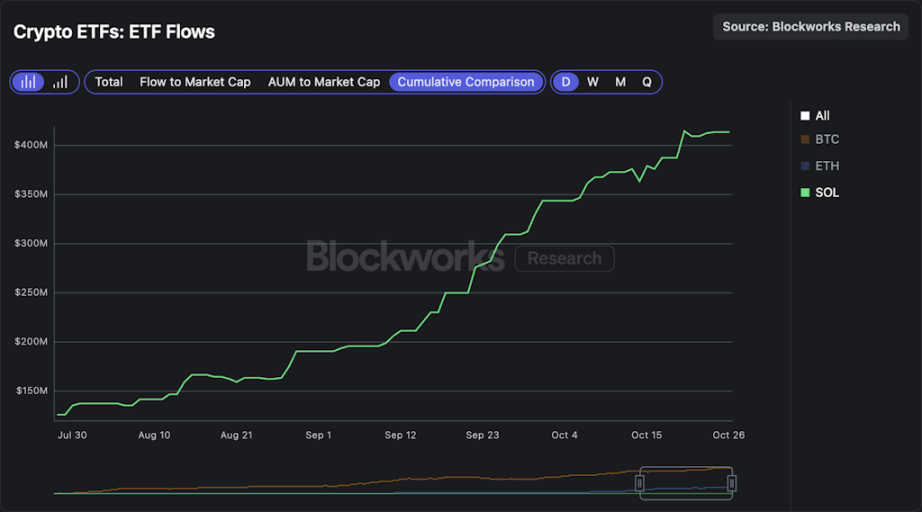
In the crypto space, MegaETH’s public sale launched yesterday, and as of this writing, it has been oversubscribed by about 9 times, with committed funds approaching 450 million dollars. So far, it is clear the auction will settle at a price of 0.0999 dollars, which means a fully diluted valuation of 999 million dollars. As the sale ends in two days, we may see the oversubscription multiple rise further (an unverified guess is about 20 times), and allocation standards will be determined based on social information (Twitter profiles, on-chain history, etc.). In the past few days, MEGA’s fully diluted valuation on Hyperliquid’s pre-listing market has traded between 4 billion and 5 billion dollars, suggesting that participating in this sale is likely to be profitable, although most users may not receive the allocation they expect.
Analyzing Jito’s Weaknesses and Its Potential Reversal Forces
The Jito token (JTO) has been weak in price performance and has significantly underperformed Solana itself. Jito’s share of fees in network revenue has plummeted, dropping from more than half of Solana’s revenue base to below 30% now, and the situation is further complicated by the general decline in Solana’s overall revenue. The question now is whether Jito has reflexivity and can benefit from a rebound in Solana network activity, which it is designed to enhance.
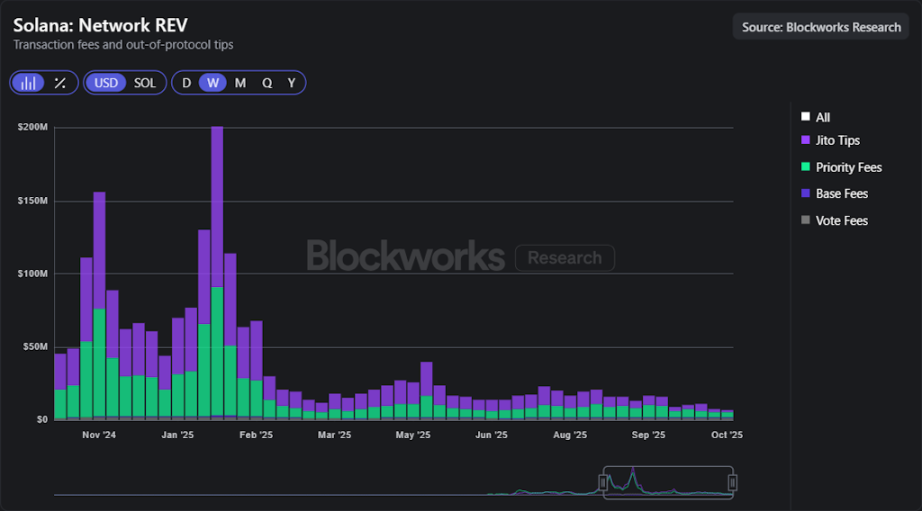
Solana’s architectural design was once highly praised, but has recently come under scrutiny, as many applications and DeFi activities have underperformed the broader crypto market. This raises the question: why hasn’t a competitive perpetual contract exchange emerged on Solana to match the execution quality of Hyperliquid? Why are teams like Elipisis Labs turning to build Atlas? The architecture provides speed, but does not always offer predictable transaction ordering, fair fee routing, or strong anti-spam capabilities.
Jito’s Block Assembly Market (BAM) aims to address this issue by retaining Solana’s monolithic design while giving applications appchain-like control over transaction ordering and fees. One potential example is the adopter speed buffer, which can slow harmful traffic and narrow spreads, similar to what Hyperliquid has deployed. The goal is clearer queues, less latency gaming, and higher quality fills, which can foster better applications and strengthen DeFi activity, potentially supporting a rebound in Solana revenue. All BAM fees are routed to the DAO, providing a new source of fees, and the BAM mainnet recently surpassed the threshold of 10 million+ SOL staked.
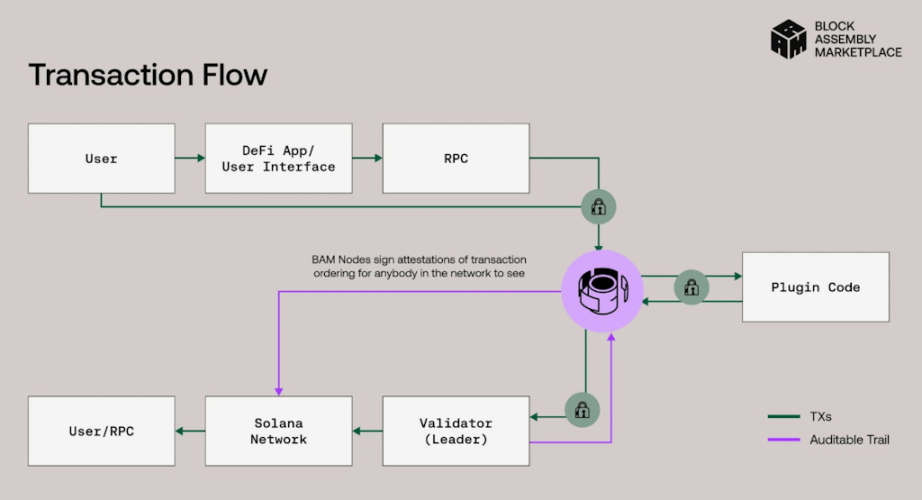
The recent 50 million dollar strategic investment (private token sale) led by Andreessen Horowitz demonstrates strong confidence from supporters. It highlights BAM’s status as core Solana infrastructure, improving the market by giving applications control over transaction ordering while reducing harmful MEV. BAM is a network that extends Solana and unlocks on-chain primitives (such as central limit order books and dark pools) that were previously unachievable due to MEV.
Solana staking ETFs are coming soon. VanEck has filed an S-1 application for a JitoSOL ETF, which will directly hold Jito’s liquid staking tokens. As more funds are launched and scale up, the potential for LST penetration increases, and the link between traditional financial inflows and Jito’s value cycle becomes closer. Note that liquid staking on Solana has been steadily increasing and now accounts for nearly 15% of staked volume.
Since SIMD-0096, validators receive all priority fees instead of sharing them with the burn mechanism, giving them a disproportionately large share of network revenue. Once SIMD-0123 is activated, it will rebalance this by requiring validators to share some of these fees with stakers, thereby increasing staking yields and distributing rewards more evenly across the network. Both of these dynamics—more ecosystem activity shared with stakers and the expansion of liquid staking—directly translate into revenue for Jito from liquid staking management fees.
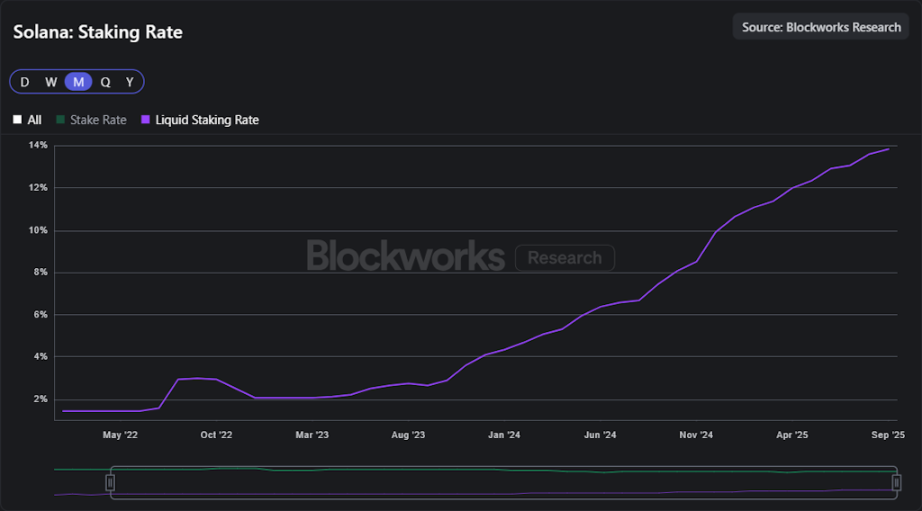
However, competition in the Solana liquid staking market has intensified. JitoSOL once held nearly half of staking liquidity, but its share has dropped to about 25% as new entrants have fragmented the market. In particular, Sanctum has gained momentum through its branded LST model and partnerships, enabling protocols to launch customized staking products that directly compete with Jito’s offerings.
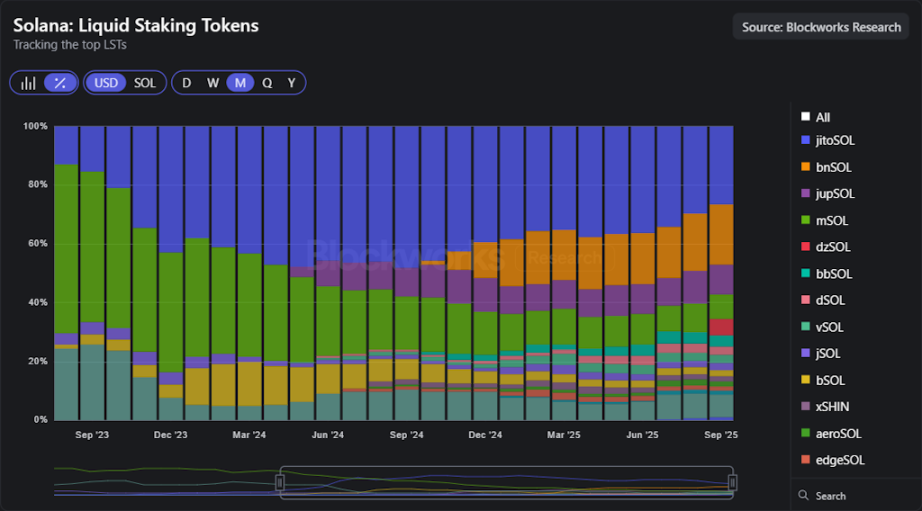
Against this backdrop, Jito is aligning protocol incentives with token holder value. After JIP 24, all block engine and BAM fees flow into the DAO treasury. The DAO allocates all revenue to ongoing JTO buybacks, with about 2.5 million dollars in buybacks executed since August 2025. SubDAO is launching Vault, JTO auctions, and TWAP buyback systems to automate this process. The monthly buyback amount is set to match the previous month’s revenue, thus establishing a direct and recurring link between network activity and token value.
Disclaimer: The content of this article solely reflects the author's opinion and does not represent the platform in any capacity. This article is not intended to serve as a reference for making investment decisions.
You may also like

Terra Luna Classic Shakes the Crypto Market with Surprising Developments
In Brief LUNC experienced a significant price decline following Do Kwon's sentencing. The court cited over $40 billion losses as a reason for Do Kwon's penalty. Analysts suggest short-term pressure on LUNC may persist, despite long-term community support.

NYDIG: Tokenized Assets Offer Modest Crypto Gains as Growth Depends on Access and Regulation

